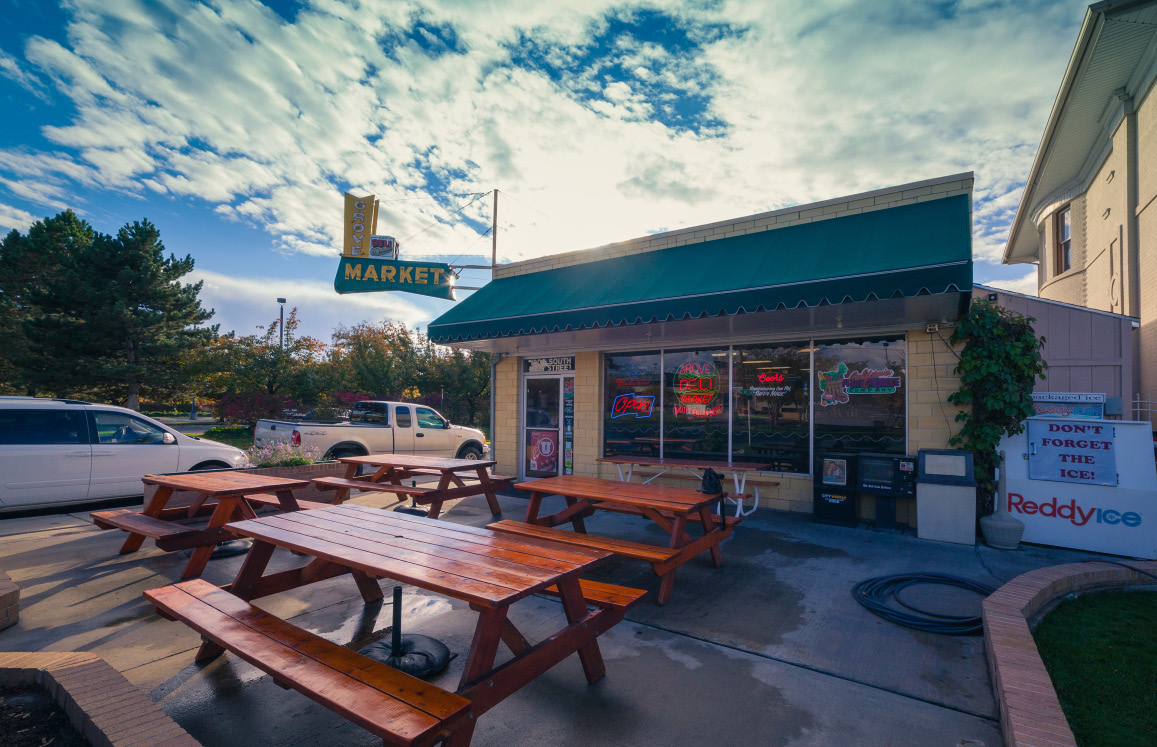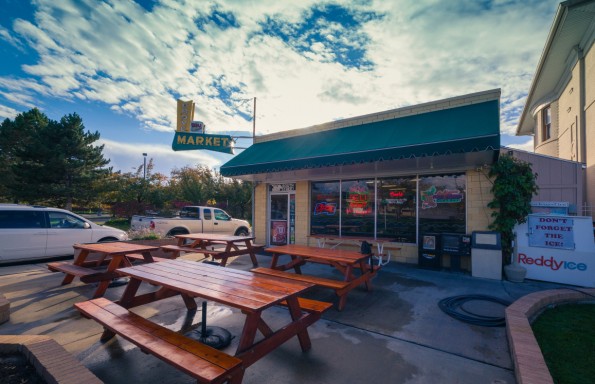 For Utah transplants, food means more than a full stomach. We miss the food we grew up with. Whether it’s pizza, lasagna, kishka, schnitzel, or spaetzle, there is a unique comfort associated with the food of our youth, bringing joy to our very soul. I grew up in New Jersey, and this kind of comfort was found at Jackie Cooper’s in Metuchen, my go-to Jewish deli. Serving inspiring pastrami and corned beef sandwiches, Reubens and Sloppy Joe’s, every element was perfect. First, of course, the meat would be served moist and hot. Those who ordered extra lean or lean were kidding themselves, as the meat would lack the supple melting quality that released the flavor. In the words of the late Leo Steiner, one of the guiding hands behind the Carnegie Deli in NYC, “If you want lean, order turkey.” Bread was fresh, moist, and stretchy enough to not disintegrate as the huge sandwiches were being devoured. We joke in my family that deli food is addictive. And that was the inspiration for opening our own deli, Feldman’s.
For Utah transplants, food means more than a full stomach. We miss the food we grew up with. Whether it’s pizza, lasagna, kishka, schnitzel, or spaetzle, there is a unique comfort associated with the food of our youth, bringing joy to our very soul. I grew up in New Jersey, and this kind of comfort was found at Jackie Cooper’s in Metuchen, my go-to Jewish deli. Serving inspiring pastrami and corned beef sandwiches, Reubens and Sloppy Joe’s, every element was perfect. First, of course, the meat would be served moist and hot. Those who ordered extra lean or lean were kidding themselves, as the meat would lack the supple melting quality that released the flavor. In the words of the late Leo Steiner, one of the guiding hands behind the Carnegie Deli in NYC, “If you want lean, order turkey.” Bread was fresh, moist, and stretchy enough to not disintegrate as the huge sandwiches were being devoured. We joke in my family that deli food is addictive. And that was the inspiration for opening our own deli, Feldman’s.
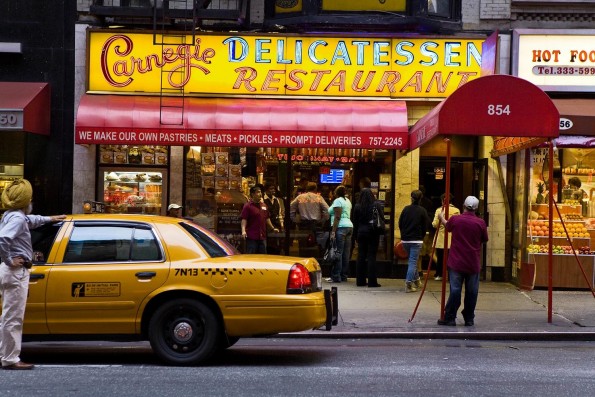 So what is the story behind the delicatessen, often referred to simply as the deli?
So what is the story behind the delicatessen, often referred to simply as the deli?
Delicatessen is a German loanword that first appeared in English in 1889. In German, it was originally a French loanword, délicatesse, meaning “delicious things,” combined with the German word “essen” which means “to eat”. The root word is the Latin adjective delicatus, meaning “giving pleasure, delightful, pleasing.” Originally known as “appetizer stores,” delicatessens are a widely popular American innovation, created by Italian, German, Polish, Russian and Jewish immigrants in the late 1800s to accommodate the hustle and bustle of New York City. Poor immigrants would find ways to make cheap cuts of meat and fish taste wonderful, using old European curing methods. Sandwiches became popular “on the go” meals for the working class. Large sandwiches made them feel important and successful in their new country. Menus grew as sandwich and appetizer options multiplied, and delis morphed to accommodate breakfast, lunch and dinner. By the 1930’s there were over 5000 deli/sandwich shops in NYC, with 1,500 of those Jewish delis. Though first appearing in NYC, delis spread like mayo across the nation after WWI, and now are found in most major cities. They are often the only place in town where you can buy authentic, traditional, ethnic specialty foods requiring very little or no preparation to eat in, or take out. Examples of classic deli food include cured meats (prosciutto, capicole, salami, pepperoni, pancetta, speck), famous cheeses (provolone, asiago, parmesan, mozzarella, mortadella, emmental, tilset, edam, gouda), European sausages (bratwurst, kielbasa, Italian fennel sausage), prepared foods (borscht, piroshky, croquette, rissole), and Jewish deli favorites (pastrami, corned beef, smoked fish, knishes and latkes).
A deli isn’t just a sandwich shop, or a grocery store, or a restaurant. Typically family owned and operated by passionate foodies, delis are for folks who love good food and are willing to pay for it. The shops are where the community gathers to sit, visit and eat. In the Jewish community, the deli is as important as the synagogue. Celebrities would frequently mix it up with the locals at the deli.
Delis emerged in Salt Lake City in 1947 with the Grove Market (still run by the same family), and in 1955 with the Lu Dornbush Delicatessen. Lu was a real character, making his own Jewish food from scratch, and his deli was wildly popular for 23 years. There was also Caneperi’s, Max’s, Van Komen’s, Mariannes’s, Cardona’s, the Scandinavian Shop and the 7th Street Deli, all now gone. In 1952, Ray Kroc opened the first McDonald’s and that forever changed the way Americans eat. Not for the better, I might add, and this made it difficult for owner operators. But 1971 saw the addition of Siegfried’s to Salt Lake City, and since then many new delis have popped up. Over the last 10 years or so, there has been a resurgence of sorts, as many of us demand traditionally made wholesome food. We even have makers of artisan meats right here in SLC. So if you want really good food passed down through generations, seek out some of these current family-owned Utah delicatessens, and treat yourselves to the fare loved by your parents, grandparents and ancestors. But beware…it can be very addictive!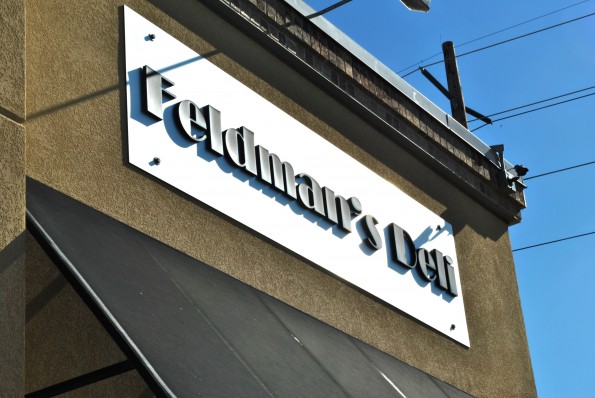
Salt Lake Artisan Meat Producers
- Colosimo Sausage – 155 W Malvern, So Salt Lake
- Creminelli Fine Meats – Online orders only at www.creminelli.
com - Frody’s Salt & Smoke Artisan Meats – 155 W 2625 South, Suite B
Salt Lake Delicatessens
- 9th South Delicatessen (East Coast) – Randy Harmsen – 931 E 900 South
- Caputo’s (Italian)– Tony/Matt Caputo – Various locations
- Cucina Deli (Gourmet Foods) – Dean Pierose – 1026 2nd Ave
- Debbie’s Deli (Great Sandwiches)– Debbie and Buzz Child – 2646 S 700 East
- Europa Café & Deli (Russian)– Galina Gnatyuk – 788 E 3300 South
- European Tastees (Russian) – Ruzan Mnoyan – 4700 900 East, #51
- Feldman’s Deli (Jewish)–Janet & Michael Feldman – 2005 E 2700 South
- Granato’s (Italian)– Frank/Sam Granato – Various locations
- Grove Market (Classic Utah)– (Pete) Jim Savas Family – 1906 S Main St
- Robin’s Nest (Gourmet Sandwiches) Robin Paluso, 311 S Main St, SLC
- Joni’s Deli (Great Sandwiches)– Joni Sorenson – 52 1700 South
- Mediterranean Market & Deli (Italian/Greek)– Annette Ravarino – 3942 S State St
- Old Dutch Store (Dutch)– Adrian & Elsje Groos – 2696 Highland Dr
- Petrone’s Pazzo Vita Deli (Italian) – Frank Petrone – 4546 S Atherton Dr, Taylorsville
- Siegfried’s Deli (Bavarian) – Siegfried Meyer – founder 1971 – 20 200 South
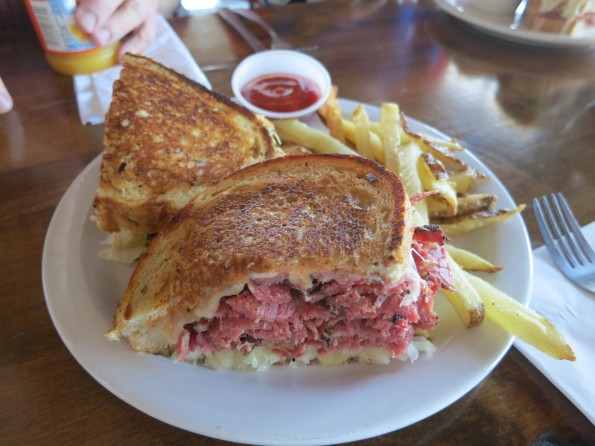
Feldman’s Deli Corned Beef Reuben

